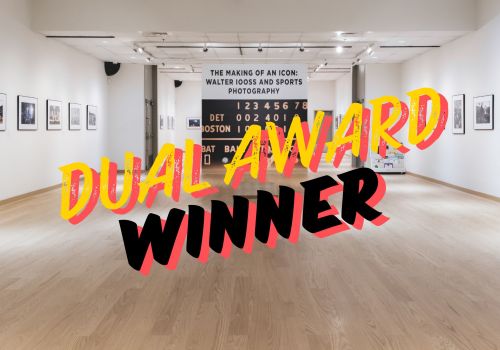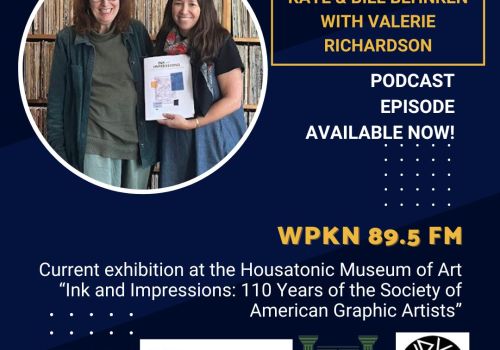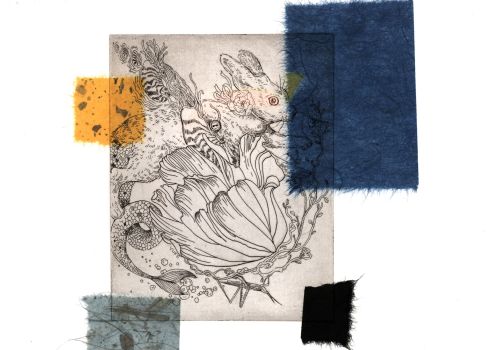
|
|
|
Guy Billout Fairfield, Connecticut Hedge Funds, 2006  Watercolor and airbrush, 10 x 8" This drawing illustrated an article in Connecticut Magazine, November 2006, highlighting Greenwich as a leading financial center for hedge funds. Greenwich, one of the most affluent communities in the United States, hosts many hedge funds and other financial services companies that manage an estimated 10 percent of the $1.2 trillion hedge fund investments worldwide. Miggs Burroughs Westport, Connecticut Hi-Ho, 2006 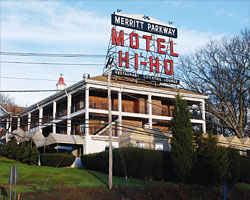 The Merritt Parkway, completed in 1940, is one of the oldest parkways in the United States. The Hi-Ho Motel, located along the Fairfield stretch of highway, reminds us how the need for inexpensive accommodations for automobile travelers generated an entire industry. Kinuko Craft Norfolk, Connecticut The Mystical Helix, 1988 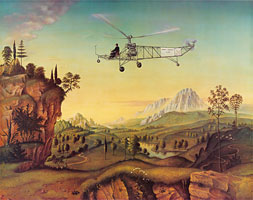 Lithograph, 17 x 21 ¾" The first modern helicopter was designed by Igor Sikorsky (1889-1972) who pilots his steel tube, open-cockpit VS-300 in this piece commissioned by the Associated Aviation Underwriters to honor Sikorsky Aircraft. The experimental aircraft made its first flight on September 14, 1939, and by the summer of 1940, it could stay airborne for 15 minutes. In May 1942, a Sikorsky S-47 or XR-4 was the prototype for the first helicopter produced in quantity for the United States armed forces. The artist portrays Sikorsky over an Italian landscape in tribute to Leonardo da Vinci whose sketches of the first recorded design of a helicopter with a rotating helix inspired the inventor as a youth. Thomas G. Fowler, (1943 - 2006) Westport, Connecticut A Toast to the Millennium, 1999 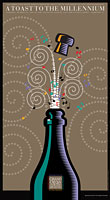 Digital based on a pencil sketch, 15 ¾ x 27 ½" Connecticut is home to many world-class museums, performance groups, and art centers. Pilobolus is recognized as a major American dance company of international influence while the Long Wharf Theater and Hartford Stage are nationally-recognized, Tony-award-winning regional theaters. The Wadsworth Atheneum is the oldest public art museum in the nation, and the Housatonic Museum of Art is the guardian of the largest art collection of any two-year college in New England. The Connecticut Grand Opera & Orchestra, in Stamford, Connecticut, was founded in 1993. The organization fosters the appreciation of operatic and orchestral works through world-class performances and education and outreach programs. This festive poster for the opening of their 1999-2000 season presented something of a dilemma for designer Tom Fowler as the performance it promoted was not an opera per se but an event starring a number of opera greats singing highlights from the Connecticut Grand Opera & Orchestra’s past ten seasons. Typically, his concept would have featured a central character or scene from the production, however, this project required more of a general theme. He explained, "I just wanted to sort of say, ‘Uncorking the season,’ with bubbles and musical notes coming out of the bottle as the cork is popping." Bernie Fuchs Westport, Connecticut Red Barn, 2006 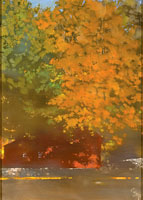 Oil on canvas, 26 x 18" Barns, once a common feature of the Connecticut landscape, are fast disappearing due to neglect and development as farms have been transformed into subdivisions. The function and form of barns have evolved over time. Initially, English barns were erected to store grain and protect livestock. They began to be connected to the family home so work could be performed without having to battle the elements. Ventilated barns and tobacco sheds developed, and finally, the timber-frame structure emerged. The Industrial Revolution affected these structures as well, allowing for standardization, mail order catalog purchase, and easy construction. Mark Hess Katonah, New York Hot Suburbs, c. 1988 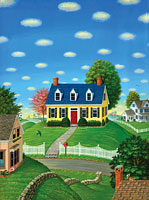 Acrylic on canvas, 16 x 12" Mark Hess recalled his childhood in Greenwich, Connecticut, when he created this New York Magazine cover for their article on the great suburbs in the Tri-State area. Hess noted, the “idealized, simplified, and fun [image] was meant to entice and beautify the lovely features of suburbia in Connecticut.” The iconic stone walls that crisscross the New England landscape are cultural icons that remind us of pre-Industrial Revolution Connecticut with its abundant farms, slower pace, and simpler life. Kathy Jakobsen Michigan; formerly Weston, Connecticut Westport, 1998 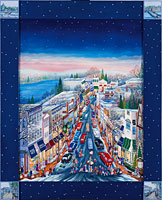 Oil on canvas, 31 ½ x 25 ½" Author, folk artist, and illustrator Kathy Jakobsen painted this illustration for the cover of Westport Magazine. She captured the spirit of the town in her original composition whose blank sky accommodated the magazine’s title as well as in the four corner pieces, which were added later. Westport and Weston have historically been, and continue to be, an enclave for artists drawn to the area’s cultural community and its proximity to New York City. The Westport Historical Society’s records confirm that from 1902 through 1940 more than 160 illustrators worked and lived in Westport alone. In addition, the Famous Artists Schools, founded by Albert Dorne along with Norman Rockwell in 1947, brought another wave of talented illustrators and artists who served on the school’s faculty. Walter O. R. Korder (1891-1962) Hartford, Connecticut Capture of Nathan Hale, c. 1940 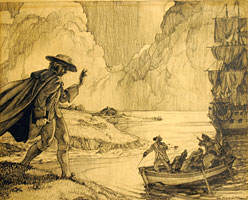 Pencil, 12 x 15" Nathan Hale (1755-76) was born in Coventry, Connecticut, and educated at Yale University. He was a school master before becoming the youngest officer in the Continental Army in 1775, serving as captain during the Revolutionary War. In 1776, he became America’s first spy when he volunteered at the request of General George Washington to cross enemy lines to gather information and to assess the strength of the British Army. He was caught while returning and hung without a trial. An account in a journal by Consider Tiffany, a Tory shopkeeper from Barkhamsted, Connecticut, relates how he was deceived into revealing his identity and mission: “The time being come, Captain Hale repaired to the place agreed on, where he met his pretended friend [British Loyalist, Major Robert Rogers], with three or four men of the same stamp, and after being refreshed, began [a]…conversation. But in the height of their conversation, a company of soldiers surrounded the house, and by orders from the commander, seized Captain Hale in an instant. But denying his name, and the business he came upon, he was ordered to New York. But before he was carried far, several persons knew him and called him by name; upon this he was hanged as a spy, some say, without being brought before a court martial.” The young hero’s last words were, “I only regret that I have but one life to lose for my country.” His patriotism earned him the distinction of State Hero by the Connecticut General Assembly in 1985. |
|

|
|
|
H. H. Art Studios, Inc. "1176 Miles in 76 Hours! Hartford’s Columbia gasoline touring car sets new record for Chicago-New York run,", 1947 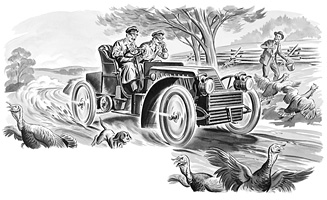 Drawing on paper, 13 ½ x 11" Another area of industry where Connecticut excelled was in bicycle manufacturing, and its spin-off, the earliest automobile manufacturing. Albert Pope of Hartford saw a bicycle in Philadelphia in 1876 and was immediately enthralled with the concept of an "ever-saddled horse that eats nothing and requires no care." He subsequently began the first bicycle manufacturing in America, Columbia Bicycles and set about marketing the vehicle, setting up a system of distributorships with fixed prices, hiring doctors to tout cycling as healthy exercise, and founding cycling magazines. The Pope Manufacturing Company was the forerunner of present day automobile corporations. H. H. Art Studios, Inc. "It’s Nice to know how far you go,", 1947  Drawing on paper, 13 ½ x 11" Curtis H. Veeder (1862-1943), a draftsman at the Hartford Cycle Company, perfected compound differential gearing, facilitating the invention of the cyclometer that recorded the miles traveled on a bicycle. In 1895, he founded the Veeder Manufacturing Company and produced speedometers for automobiles. He expanded his business and partnered with the Charles Root Company to manufacture counters for machine-guns, jukeboxes, vending machines, and taxi meters as well as ammunition counters, walkie-talkies, high speed radar counters, and other specialized equipment. Their slogan, “Veeder-Root counters count everything on earth,” proved to be true! Lonni Sue Johnson Cherry Valley, New York; formerly Sherman, Connecticut Noah Webster’s Dictionary, 2007 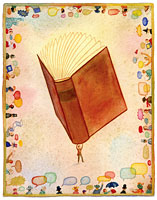 Watercolor and gold paint, 7 ½ x 6" Noah Webster (1758-1843), father of the modern dictionary, was born in 1758 in West Hartford, Connecticut. From 1801-28, he wrote An American Dictionary of the English Language to standardize American vocabulary, spelling, and pronunciation. Bob Kessel Norwich, Connecticut Olmsted Park, 2006 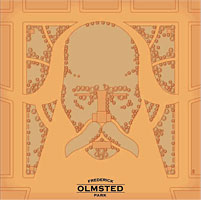 Ink jet on archival Somerset paper, 22 x 30" Frederick Law Olmsted (1822-1903) was born in Hartford, Connecticut. A champion of the City Beautiful movement, he is recognized as the founder of American landscape architecture, designing with Calvert Vaux New York City’s Central Park and Prospect Park, Chicago’s Riverside subdivision, Buffalo’s park system, and the Niagara Reservation at Niagara Falls. Olmsted designed Connecticut’s Seaside and Beardsley Parks in Bridgeport, Walnut Hill Park in New Britain, Memorial Park in New London (one of only two cemeteries that he designed), and the Institute of Living in Hartford. He also made many sketches for the state Capitol in Hartford, which were never realized. Many other projects in the state were designed later by his sons through the Olmsted Brothers firm that he founded. In July 2005, the General Assembly passed a bill proclaiming April 26 of each year to be Frederick Law Olmsted Day to honor his betterment of American society through the creation of pastoral respites for all classes of people in crowded urban settings. Walter O. R. Korder (1891-1962) Hartford, Connecticut Andross Demands Connecticut Charter, c. 1940 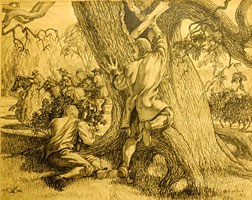 Pencil, 12 x 15" In 1662, King Charles II of England granted the Connecticut Colony a Royal Charter with liberal autonomy. His successor, King James II, asserted tighter control, and in 1687, overrode their rights by appointing Sir Edmund Andross, then governor of New York, as governor of the Dominion of New England. Andross demanded Connecticut relinquish the charter to him, threatening to split the state between Massachusetts and New York along the Connecticut River. He traveled from Boston to Hartford, and during a debate and scuffle at Butler’s Tavern, Captain Joseph Wadsworth with others snuck the charter from the room and hid it in an oak tree on Wyllys Hill. The Charter Oak is now celebrated as the state tree. The Museum of Connecticut History displays a parchment that it regards as the original charter. (The Connecticut Historical Society is said to possess a "fragment" of it.) In addition, the ceremonial seat of the president of the Connecticut Senate is made from the oak tree, which was destroyed during a severe storm in 1856. Barry Moser North Hatfield, Massachusetts Mark Twain, 1985 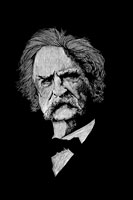 Wood engraving, 12 x 10" Mark Twain (Samuel Langhorne Clemens, 1835-1910) lived in Hartford, Connecticut, from 1871-91, where he completed some of his most famous works, including The Adventures of Tom Sawyer, Life on the Mississippi, The Prince and the Pauper, A Connecticut Yankee in King Arthur’s Court, and Huckleberry Finn. He left the state to travel worldwide and to live in New York City, returning in 1908 to his "Stormfield" house in Redding, Connecticut, where he died in 1910. His Hartford Courant obituary claimed him as the city’s son, stating, "the feeling has never died out here that he belonged to Hartford, and this has been intensified by the fact that wherever any Hartford traveler went the first question asked of him was whether he knew Mark Twain." Barry Moser created this frontispiece for the centenary edition of Huckleberry Finn published first by Pennyroyal Press in celebration of Samuel Langhorne Clemens. Merle Nacht New Haven, Connecticut Old State House, 1997 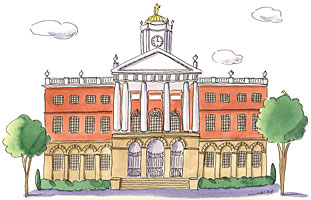 Pen, ink, and watercolor, 7 ¼ x 11 ¾" The Old State House in Hartford, Connecticut, is the oldest state house in the United States, and served as the seat of state government until 1878. Completed in 1796, it was designed by Charles Bulfinch, the first architect to gain national prominence and the architect of the United States Capitol Building in Washington, DC. Throughout the 1790s, Hartford emerged from the post-Revolution depression as a stable center for commercial and social growth. Today the rich history of the Old State House remains a symbol of pride for Connecticut residents. On the site in 1637, the first written constitution guaranteeing the right to representative government was enacted by British colonists, earning the state its nickname, “The Constitution State.” In addition, the Old State House has welcomed many visitors, including Presidents Jackson, Monroe, Johnson, Ford, Carter, and Bush as well as Mark Twain, Charles Dickens, Samuel Colt, P. T. Barnum, and Harriet Beecher Stowe. |
|

|
|
|
Murray Tinkelman Cortlandt Manor, New York Paulie and Mexico Reflecting, 1983 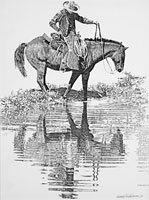 Pen and ink on Bristol board,
22 ½ x 18 ½”
Today’s rodeo has evolved from nineteenth-century competitions by cowboys in roundup camps to high-stakes events dominated by professional athletes in large arenas filled with cheering crowds with coverage by ESPN (Bristol, Connecticut). Rodeo’s roots can be traced to the horsemanship and roping traditions of the Spanish conquistadores. These skills, taught to American cowboys by the Spanish padres and vaqueros who dominated the American West before 1848, were valuable as the cattle business began to flourish and as an expanding cowboy population drove cattle to the bustling stockyards of fast-growing towns after the Civil War. The cowboy, however, was soon replaced by the “iron horse” with the completion of the transcontinental railroad in 1869. Out-of-work cowboys sought employment by entertaining spectators at rodeos and extravaganzas such as Buffalo Bill’s Wild West show. ESPN counts the National Finals Rodeo as one of its most popular programs attracting over 13 million viewers. Tinkelman was commissioned by Equus Magazine to do an illustration of a cowboy and his Mustang horse. With a bit of sleuthing, he located Paulie Crotta of Bethany, Connecticut, a rodeo cowboy who specialized in Team Roping events and owned a Mustang named Mexico. The Crotta Ranch is still a hotbed of rodeo team roping and calf roping activity. John Dykes Sudbury, Massachusetts; formerly Fairfield, Connecticut O'Rourke’s Diner, 2001  Acrylic on board,
23 x 29"
John Dykes’ illustrations reveal his fascination with offbeat, quirky eateries and doughnut shops located in Connecticut. Of special interest are his depictions of diners in Fairfield and Middlesex counties. O'Rourke’s Diner (Middletown) is one of a series of six paintings created for Yankee Magazine, May 2001 issue, Best New England Diner Pageant. He depicted one diner for each of the six New England states. The concept of diners originated in New England, evolving from lunch wagons that served sandwiches and pies to third shift workers beginning in 1872 in Providence, Rhode Island. These horse drawn wagons eventually became semi-permanent structures with styling based on the railroad's Pullman dining car. With the advent of Art-Deco design, these structures became sleeker and more modern, incorporating Naugahyde vinyl (made in Naugatuck) and metal tubing with gleaming Formica countertops. Initially, these dining wagons would follow workers to their places of employment like today's coffee trucks; over time they became established structures serving the residents of their communities as well as weary travelers looking for a hot, home cooked meal at reasonable prices. Bill Thomson Southington, Connecticut Blue-Blazed Hiking Trails, 2004 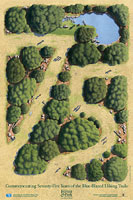 Acrylic with colored pencil,
37 x 28"
In 1929, the Connecticut Forest and Park Association Trails Committee under the guidance of Edgar L. Heermance created the Blue-Blazed Hiking Trail System that today extends over 700 miles. The Quinnipiac Trail was the first Blue-Blazed Trail, beginning at Mt. Carmel just above the entrance to Sleeping Giant Park. The original route wound through wooded and paved town roads, along an old Indian trail, and over traprock ridges, including Sleeping Giant, York Mountain, Mad Man's Hill, and Mt. Sanford. Leslie Cober-Gentry Fairfield, Connecticut The First Hamburger Comes from New Haven, Connecticut, 2007  Watercolor, colored pencils, India inks, and collage,
14 x 10 ½"
Louis’ Lunch sandwich shop on Crown Street in New Haven, Connecticut, served the first hamburger in the United States in 1895. Founder Louis Lassen sold steak sandwiches at his small lunch wagon and ground the excess beef to form patties served between two pieces of bread. The luncheonette is currently operated by third and fourth generations of the Lassen family who offer their burger specialties on toast with cheese, tomato, and onion, but ketchup or mustard is not provided. Randall Enos Easton, Connecticut Roast Meat Hill, c. 1980 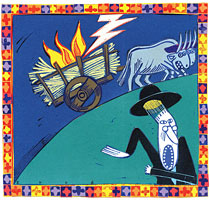 Linocut,
8 x 8"
This illustration, featured in Connecticut’s Finest Magazine, depicts one of the accounts of the origin of the name of Roast Meat Hill Road in Killingworth, Connecticut. Thomas L. Lentz, founding member of the Killingworth Historical Society, relates in his book A Photographic History of Killingworth that a hay cart pulled by oxen was struck by lightening, igniting them both. |
|

|
|
|
Brian Cronin Portugal; formerly New York City Seven People from Connecticut, 2007  Carbon and charcoal on printing paper, 27 x 22" Brian Cronin has selected a diverse group of people whose individual accomplishments and passions merge to create a single portrait of a Connecticut native replete with all the qualities and characteristics ascribed to the Connecticut "Yankee." Although she was driven from her hometown of Canterbury for educating young African-American women, Prudence Crandall (1803-1890) embodied the history of Yankee reform movements begun in 1800, including abolition, temperance, and women's rights and education. Samuel Colt (1814-1862) displayed Yankee ingenuity, starting out as an indentured servant on a Glastonbury farm, and through hard work and resourcefulness, amassed both fortune and fame by inventing the revolver and the repeating firearm. Anson Dickinson (1779-1852) of Milton practiced the art of portrait miniatures for his clients who were both celebrated and ordinary citizens. Miniatures were extremely popular before being supplanted by the new art of photography, and Dickinson, renowned in his own time, is largely forgotten. Born in Cheshire, Samuel Augustus Foote (1780-1846) served as Governor of Connecticut in 1834 and 1835. Henry Shelton Sanford (1823-1891) of Woodbury built his fortune manufacturing brass tacks, served as a Senator in the Connecticut Senate, was an American Diplomat, and founded the town of Sanford, Florida. During the Civil War, Sanford coordinated northern secret service operations, coordinated the purchase of supplies for the Union effort, and on behalf of Secretary of State William H. Steward, offered the Italian patriot Giuseppe Garibaldi a Union Command. Bristol native and Yankee soldier Austin David Thompson (no dates) enlisted in the Connecticut 16th Infantry on August 11, 1862. Promoted from private to corporal and then sergeant, he fought at Antietam, Edenton Road, Fredericksburg, and Providence Church Road, and was captured and held as a prisoner of war at Plymouth, North Carolina. Samson Occum (1723-1792) was an elected leader of the Mohegans, a Christian missionary, and a teacher. Although white society betrayed Occum by breaking promises about Native American land agreements, education, and community development, history has recognized his contributions. Acknowledged as the Father of Native American Literature, he founded Dartmouth College, and is revered to this day by the Brothertown Indian Nation and the Mohegan, Shinnecock, and Montauk people. Kelloggs & Comstock Steam Works of the Hayward Rubber Company, 1848-1850  Lithograph; printer’s ink on wove paper, 177/8; x 22" The Industrial Revolution coupled with the decline of the whaling business brought workers to Colchester, Connecticut. The population doubled with the opening of three tanneries and a woolen mill (1819), a hatter (1828), a wheel and carriage factory (1858), a paper mill (1869), a creamery (1886), and a canning company (1893). The Hayward Rubber Company was established in 1847 by Nathaniel Hayward who, with Charles Goodyear, discovered the process of vulcanized rubber. The company manufactured rubber boots and shoes that were shipped throughout the country until its close in 1893. This promotional print was published by Kelloggs & Comstock of Hartford who, from 1830 until the end of the century, was the second largest producer of decorative prints for the American market behind Currier and Ives. Walter O. R. Korder (1891-1962) Hartford, Connecticut New London’s Whaling Industry, c. 1940 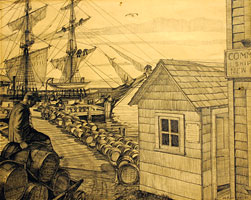 Pencil, 12 x 15" New London, Connecticut, founded in 1646 by John Winthrop, Jr., became an important port in Colonial America because of its protected harbor at the mouth of the Thames River, and it served as the base of American naval operations during the Revolutionary War. With its access to Long Island Sound, New London was America's third leading whaling port behind New Bedford and Nantucket, boasting over 30 ships and 900 whalers in 1834. Walter O. R. Korder (1891-1962) Hartford, Connecticut Simon Lake Builds Submarines, c. 1940 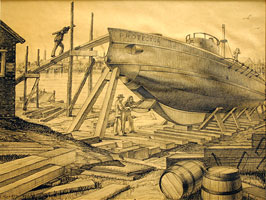 Pencil, 12 x 15" American engineer and naval architect, Simon Lake (1866-1945) founded the Lake Torpedo Boat Company in Bridgeport, Connecticut, in 1912, and built 24 submarines for the U.S. Navy during and after World War I. Although Lake was born in New Jersey, he nevertheless exhibited Yankee ingenuity by obtaining over two hundred patents for advances in naval design and by competing with John Holland to build the first submarines for the United States Navy. Ross MacDonald Newtown, Connecticut Fox, 2004 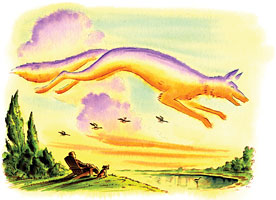 Watercolor and pencil crayon, 12 x 18" This illustration, which appeared on the cover of the Connecticut section of The New York Times in May 2004, brings to mind the story of Israel Putnam who killed the last wolf in Connecticut in December 1742. Putnam and other farmers pursued the wolf which had preyed on their sheep and goats, cornering it after an overnight chase in a den in Pomfret, Connecticut. Putnam, with a rope tied around his legs so he could be pulled to safety, crawled into the den and shot the wolf with his rifle. The wolf den is located in Wolf Den State Park in Pomfret. Putnam later distinguished himself at the Revolutionary War Battle of Bunker Hill in 1775. Hal Mayforth Montpelier, Vermont A Goin’ to Glory, 2003 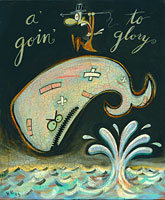 Acrylic on wood panel, 24 x 20" The sperm whale was selected as our state animal by the General Assembly in 1975 in recognition of the history of whaling in Connecticut and its present-day status as an endangered species. During the 1800s, Connecticut ranked second only to Massachusetts in the American whaling industry with numerous ports, including New London and Mystic. The sperm whale was the species most sought after for oil for lamps and other products. Wendell Minor Washington, Connecticut Trail Wood - Edwin Way Teale House, 2004 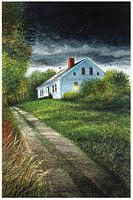 Watercolor , 10 ¾ x 7" Edwin Way Teale (1899-1980) was one of the best-loved naturalists of his generation. As a writer, he has been ranked with Henry David Thoreau, John Muir, and John Burroughs. He was also an accomplished photographer who pioneered new techniques for creating close-up images of insects and other living things. In 1959, he and his wife Nellie left the increasing suburbanization of their Long Island home for a 130-acre wooded estate in Hampton, Connecticut, which they named "Trail Wood." This became the subject of one of Teale’s most popular books, A Naturalist Buys an Old Farm (1974). Among Teale’s many other books are The Insect World of J. Henri Fabre (1949), North with the Spring (1951), Circle of the Seasons (1953), and Wandering Through Winter (1965), for which he won the Pulitzer Prize. After Nellie Teale’s death in 1993, Trailwood passed to the Connecticut Audubon Society which maintains it as a public sanctuary and a memorial to two remarkable individuals and their appreciation for the natural world. Christopher Passehl Essex, Connecticut Benedict Arnold, 2007 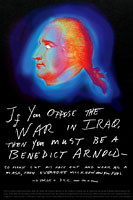 Archival ink jet on Somerset velvet, 14 x 20 ½" Benedict Arnold (1741-1801) is best known for his traitorous acts against General George Washington during the Revolutionary War. He was born in Norwich, Connecticut, into prominent New England families. With the failure of his father’s business ventures, he was withdrawn from school and apprenticed to an apothecary before establishing his own apothecary and shipping business in New Haven. His military career began with his service in the army during the French and Indian War. He served for the American cause during the Revolutionary War with some success that was tinged with failure and disreputable behavior. He felt embittered by his perceived lack of recognition by Congress and the Continental Army, and in 1780, plotted with the British to turn over the strategically-important West Point stronghold for a payment of 20,000 pounds. The plans collapsed when his British counterpart was captured and hung. Arnold sought refuge with British forces who appointed him a brigadier general, and he escaped to England after the war. Garrett Price (1896-1979) Westport, Connecticut Ivoryton Playhouse, c. 1951  Gouache on paper, 15 x 11 ½" The Ivoryton Playhouse, Ivoryton, Connecticut, was the first self-supporting summer theater in the nation, and was built as an employee recreation center by the Comstock-Cheney factory in 1908. Katherine Hepburn, Cliff Robertson, Marlon Brando, Helen Hayes, and Groucho Marx, to name a few, performed there. The playhouse continues to provide first-class, year-round theater programs. Jeff Seaver Westport, Connecticut Birdsong, 2003 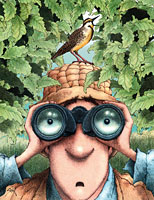 Pen, ink, and colored pencil on Bristol board, 10 ¾ x 8 ¼" The Audubon Society was founded over one hundred years ago to protect birds from hunters who sold their feathers for use on hats and clothes. Birdsong was commissioned by National Wildlife Magazine with the Audubon Society to encourage bird watching in Connecticut. Birds and wildlife continue to be threatened today by uncontrolled development that fragments or destroys their habitat. |
|
Illustrating Connecticut
|
Explore by Region
|
FEBRUARY 7 - APRIL 4, 2008Gallery Talk March 27, 2008 Stephanie Haboush Plunkett, deputy director and chief curator at the Norman Rockwell Museum in Stockbridge, Mass., will present an illustrated talk on the national influence and contributions of the “Golden Age Illustrators” at the Burt Chernow Gallery at the Housatonic Museum of Art on Thursday, March 27, 2008 at 12:30 p.m. The event is free and open to the public. More... TV Show Highlights Exhibit Illustrating CTwill be the focus of the television show Positively Connecticut with Diane Smith in April. The show, which airs on CPTV (CT's PBS station), will air April 10, 2008 at 8:00pm with repeats on April 12th at 6:30pm and April 13th at 10:30pm. Check you local listing for the correct channel for CPTV. |
ILLUSTRATING CONNECTICUT • PEOPLE, PLACES AND THINGS
Robbin Zella
Illustrating Connecticut: People, Places, and Things explores the history and culture of Connecticut, highlighting the art of illustrators, many of whom presently live and work in the state.
Connecticut has long been called "home" by artists drawn to its proximity to New York City. A strong contingent in Westport and Weston has allowed for the development of such collections as the Sanford B. D. Low Illustration Collection at the New Britain Museum of American Art, the Westport Historical Society, and the Westport Library, the latter two with illustration collections on continuous view.
Illustrating Connecticut: People, Places, and Things features works by Randall Enos, Murray Tinkelman, Kathy Jakobsen, Guy Billout, Nancy White Cassidy, Merle Nacht, Mark Hess, Wendell Minor, Bob Kessel, Blaine Kruger, Miggs Burroughs, Bernie Fuchs, Lonni Sue Johnson, Leslie Cober-Gentry, Hal Mayforth, Kinuko Craft, Robert Crawford, Brian Cronin, Thomas G. Fowler, Ross MacDonald, Walter O.R. Korder, Garrett Price, Etienne Delessert, Christopher Passehl, Jeff Seaver, Bill Thomson, John Dykes, and Barry Moser. These artists capture the many facets of Connecticut, spotlighting the history of its agricultural origins, the role that its inventions played in the Civil War and the winning of the American West, the significance of its military contributions in developing helicopters and submarines, and its leadership in forming a national identity through a shared language. The quintessential New England town green serves as an icon of civic pride while the First Constitution (Fundamental Orders) hidden in the Charter Oak stands as a symbol of the independence and resolve of its people. Also enduring is the image of the Yankee Peddler selling products produced here: buttons, pins, needles, clocks, and nutmeg.
These works are powerful narratives that offer an accounting of extraordinary sacrifice and outrageous fortune, of conspirators and heroes, and of objects brilliantly conceived and borne through perseverance and sheer determination. On the following pages you will be (re)acquainted with Native American Samson Occom, a founder of Dartmouth College, the infamous defector and spy Benedict Arnold who led the British attack on New London, and humorist Mark Twain and his gifts to the literary arts. Connecticut boasts many "firsts:" Jupiter Hammond who in 1760 was the first African-American writer to be published, the Old State House, Hartford, which was the first state house in America, and the first American cookbook that was published in Hartford in 1796. I hope that you will enjoy these beautiful, delightful, and more often than not, witty illustrations that make (re)learning about Connecticut's rich and varied history not just interesting, but fun!
Stephanie Haboush Plunkett, deputy director and chief curator at the Norman Rockwell Museum in Stockbridge, Mass., will present an illustrated talk on the national influence and contributions of the “Golden Age Illustrators” at the Burt Chernow Gallery at the Housatonic Museum of Art on Thursday, March 27, 2008 at 12:30 p.m. The event is free and
Archived PRess Release from March 6, 2008
CURATOR TO SPEAK AT HOUSATONIC MUSEUM GALLERY
ILLUSTRATED TALK DISCUSSES
ROLE OF MAJOR ILLUSTRATORS
CREATING AMERICA: ILLUSTRATION IN CONTEXT
Stephanie Haboush Plunkett, deputy director and chief curator at the Norman Rockwell Museum in Stockbridge, Mass., will present an illustrated talk on the national influence and contributions of the “Golden Age Illustrators” at the Burt Chernow Gallery at the Housatonic Museum of Art on Thursday, March 27, at 12:30 p.m. The event is free and open to the public.
The talk will focus on the emergence of the publishing industry in the nineteenth century as the chief employer of artists. At this time, books and periodicals were the major sources of entertainment and information. During the "Golden Age," which ran from 1865 to 1920, the work of talented illustrators assumed unprecedented importance.
Currently, television, film, and the Internet have the major impact on public perception unlike the illustrators in the beginning of the 20th Century who reflected the aspirations of the nation and created visions of the American dream.
This illustrated talk will look at the extensive work that had national influence. It will examine the contributions of Golden Age illustrators J.C. Leyendecker, James Montgomery Flagg, Norman Rockwell, Charles Dana Gibson, John Held, Jr., N.C. Wyeth and others in the “great band of illustrators” who, said Norman Rockwell, “showed us to ourselves.”
A focus on Connecticut artists will highlight the art of important mid-twentieth century illustrators. Al Parker, Al Dorne, Harold von Schmidt and others influenced American’s values and aspirations during the post-war era and became founders of The Famous Artists School, an influential correspondence course based in Westport that had celebrated faculty including Norman Rockwell, Stevan Dohanos, Robert Fawcett, Ben Stahl, Austin Briggs, Jon Whitcomb, Peter Helk, Fred Ludekens, John Atherton and others.
The museum is located on the campus of Housatonic Community College, located at 900 Lafayette Blvd, Bridgeport, less than 150 yards of I-95 (Exit 27) and Rte. 8 (Exit 1).
Plunkett Biography
Stephanie Haboush Plunkett is the Deputy Director and Chief Curator at the Norman Rockwell Museum in Stockbridge, Mass. The recipient of a Master of Fine Arts degree from the School of Visual Arts Illustration as Visual Essay program, she is the author of two American Library Association Notable children’s books and the curator of many exhibitions for the Norman Rockwell Museum, including Ephemeral Beauty: Al Parker and the American Women's Magazine: 1940-1960, Building Books: The Art of David Macaulay, The Art of The New Yorker: Eighty Years in the Vanguard, and Women in Illustration: Contemporary Visions and Voices, among others. She has also held positions at the Brooklyn Museum and the Brooklyn Children's Museum in Brooklyn, N.Y., and at the Heckscher Museum in Huntington, N.Y.
Explore by Region
Click on Region to View
Illustrations

Why Not?!


Exhibition sponsored by the Women's Caucus of Art- Connecticut Chapter with additional funding from the James A. Hulley Arts Foundation and the CT Commission on Culture and Tourism
Women Artists Pushing on the Boundaries
The question "Why Not?!" suggests freedom, boundary-stretching, new possibilities. To what established "No!" do women artists respond: "Why Not?!" The works in this show are the responses of women as they engage the question with personal, historical or universal issues.
The exhibit was open to applications from women artists from the following states: New York, Connecticut, Massachusetts, Rhode Island, New Hampshire, Vermont and Maine.
Exhibit Events:
"Lunch and Learn" guided tour
Thursday, 9/18/2008
12 noon: Meet in lobby outside Burt Chernow Gallery for lunch (Bring
own lunch.) and a short film presentation
12:30 – 1:30 p.m.: Guided Tour of Housatonic collection
with emphasis on women artists.
Artists in the collection include the famous NY School
artist Elaine de Kooning, Lee Bontecou, Alice Baber, Rene Schumacher,
Sylvia Sleight, Doris Cesar, Jane Freilicher, Jane Peterson. Current
or one-time WCA-CT members in the museum: Ann Chernow, Camille Eskell,
Suzanne Benton, Alberta Cifolelli, and CT feminist activist artist
June Ahrens, as well as Susan Sharp.
Free admission.
"Re-invent: WHY NOT?!" panel discussion, moderator Janet Luongo
Thursday, 10/16/2008
5:30 – 6:30 p.m.: reception with the speakers in the Burt
Chernow Gallery
6:45 – 8:00 p.m.: panel discussion in HCC's newly opened Beacon
Hall
Free admission.
A panel of outstanding women will discuss how women re-invent their careers, themselves, their ways of working and problem-solving, and how they break boundaries and re-energize.
Panelists: Exhibit Juror, Helen Klisser During, former curator of the Silvermine Gallery, currently a consultant to collectors; singer and photographer, Suzanne Sheridan; Prill Boyle, best-selling author of Defying Gravity about late-blooming women; and former art journalist Lisa Paul Streitfeld, now a full-time writer & artist in NYC.
WHY NOT?! Exhibiting Artists:
Corina Alvarezdelugo
Lisa Arnold
Judy Atlas
Nina Bentley
Suzanne Benton
Binnie Birstein
Edith Borax-Morrison
Karen Brussat Butler
Marilyn Clements
Sharon Coffin
Ann Conrad
Emily Corbato
Marie M. Curtis
Liz Dexheimer
Jean Proux Dibner
Anne Doris-Eisner
Katharine Draper
Laura Duggan
Renae Edge
Nancy Eisenfeld
Elizabeth Rose Eiten
Catherine Evans
Ellen Hackl Fagan
Ruth Feldman
Helga Butzer Felleisen
Tracy Walter Ferry
Joan Fitzsimmons
Oi Fortin
Kathryn Frederick
Karen Frostig
Michele Gage
Hagitte Gal-Ed
Michela Anne Griffo
Shiela Hale
Ginger Hanrahan
Sydney Phillips Hardin
Judy Henderson
Sheila Kaczmarek
Karen Kalkstein
Elisa Keogh
kHyal
Constance Kiermaier
Min Sin Kim
Ann Langdon
Linda Lancz
Gail Lee
Jane R.Lubin
harriet regina marion
Fruma Markowitz
Pat Martin
Karen Maru
Jennifer McCandless
Jan McLean
Nancy McTaque-Stock
Sandra K. Meagher
Irene K. Miller
Meredith Miller
Julie Fay Miller
Liana Moonie
Nancy Moore
Maria Morabito
Judith Morton
Trish Elwood O'Day
Constance Old
Lisa Oswald
Liz Pagano
Rebecca Parker
Carla Payson
Andrea Raynor
Amy Regan
Colleen Reilly-Rees
Alicia Renadette
Ginny B. Rogers
Tina Rohrer
Hannah Rossi
Sonia Roy
Roxanne Faber Savage
Debra Schaffer
Susan Sharp
Jody Silver
Debbie Smith
Melissa Smith
Anita Soos
Terry Spring
Judith Steinberg
Zsuzsanna Szegedi
Regina Thomas
Jeanne Williamson
Art/Place 25th Anniversary

December 17 - January 30, 2009
Opening Reception Thursday, December 18, 5-7pm
Artist Talk with Arlé Sklar-Weinstein, Thursday, January 8, 5-7pm
The 25th Anniversary Art/Place Exhibition will encompass a wide range of 21st century artistic creativity, from representational to abstract and conceptual, in paintings, prints, photography and mixed media. A highlight will be a wall with a grid of artist portraits created by member Arlé Sklar-Weinstein. Inspired by studio visits to each artist, the individual portraits are mixed media compositions which capture the spirit of the artist as well as his or her image in photo montages.
The seeds of the project sprouted over a year ago when Sklar-Weinstein was participating in an Artist Residency at the Fundacion Valparaiso in Mojacar, Almeria, Spain. Her first Artists Portraits series of the eight international artists and writers there were shown in an Art/Place exhibition here in 2007 and her colleagues proposed a similar project for their 25th Anniversary Exhibition.
Sklar-Weinstein will discuss her work in an Artist Talk on Thursday, January 8 from 5 to 7 p.m at the museum.
A catalogue of the Artists Portrait Project includes a quote from The New York Times on the l982 opening of Art/Place in the Southport Railroad Station which described the gallery as “a blend of old architecture and new aesthetics, creating an exciting art environment.” The founders’ goals were to create a cooperative run by artists – not bound by the complex concerns of a museum, nor determined by the strong market concerns of a commercial gallery….a place where artists were free to explore and develop their own potential, and where artistic concepts and space combined to benefit both the artists and the community.
|
Sampling
of Participating Artists (click image for larger view) |
||
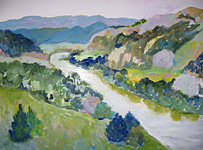 |
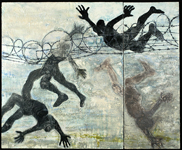 |
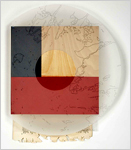 |
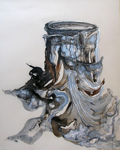 |
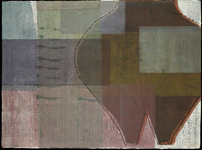 |
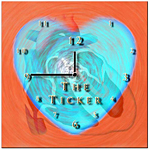 |
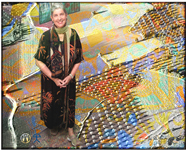 |
 |
|
|
All Participating
Artists
|
||
|
Don Axelroad |
Lori Glavin
Barbara Harder Susanne Keany Elisa Khachian Cate Leach Mary Louise Long Belle Manes |
Mary Jo McGonagle Sandra Meagher Toby Michaels Liana Moonie Susan Newbold Diane Pollack David Pressler |
Archived Press Release From November 18, 2008
ART PLACE HAS 25TH ANNIVERSARY EXHIBITION AT HOUSATONIC MUSEUM OF ART
DEC 18-JAN 30
Art/Place, Fairfield County’s unique artists’ cooperative is culminating a year of exhibits throughout the county with a major celebratory 25th Anniversary exhibition at the Housatonic Museum of Art in Bridgeport.
Opening with a public reception on Thursday, December 18 from 5 to 7 p.m., the exhibition will run through January 30. The museum’s 2,000-square-foot gallery space, a part of Housatonic Community College, will allow Art/ Place’s 28 members the opportunity to exhibit multiple and large scale works.
The venue is especially welcome as Art/Place has been without a space to call their own since a fire destroyed its “home place” gallery in the Southport Railroad Station in January 2008. That gallery space is currently being reconstructed by the State Department of Transportation and Art/Place will move back into their new gallery sometime in 2009.
The 25th Anniversary Art/Place Exhibition will encompass a wide range of 21st century artistic creativity, from representational to abstract and conceptual, in paintings, prints, photography and mixed media. A highlight will be a wall with a grid of artist portraits created by member Arle Sklar-Weinstein. Inspired by studio visits to each artist, the individual portraits are mixed media compositions which capture the spirit of the artist as well as his or her image in photo montages.
The seeds of the project sprouted over a year ago when Sklar-Weinstein was participating in an Artist Residency at the Fundacion Valparaiso in Mojacar, Almeria, Spain. Her first Artists Portraits series of the eight international artists and writers there were shown in an Art/Place exhibition here in 2007 and her colleagues proposed a similar project for their 25th Anniversary Exhibition.
Sklar-Weinstein will discuss her work in an Artist Talk on Thursday, January 8 from 5 to 7 p.m at the museum.
A catalogue of the Artists Portrait Project includes a quote from The New York Times on the l982 opening of Art/Place in the Southport Railroad Station which described the gallery as “a blend of old architecture and new aesthetics, creating an exciting art environment.” The founders’ goals were to create a cooperative run by artists – not bound by the complex concerns of a museum, nor determined by the strong market concerns of a commercial gallery….a place where artists were free to explore and develop their own potential, and where artistic concepts and space combined to benefit both the artists and the community.
“When we heard that this talented group of artists needed a place to hold a 25th Anniversary milestone exhibit, we were delighted to offer our galleries,” said Housatonic Museum of Art director Robbin Zella.
Founded in l967 by the late Burt Chernow, author and professor, the Housatonic Museum of Art encompasses an extensive collection of over 4,000 artworks including masters such as Picasso, Renoir, Rodin and Dali. It is located at 900 Lafayette Blvd., off Exit 27 on I 95. The galleries are open Mon.- Fri. 8:30 a.m.- 5:30 p.m., Thurs. til 7 p.m. Closed on weekends December 20 through January 28.
For further information: (203) 332-5052
Ann Chernow- Picasso Project

The opening reception for this exhibit is Thursday, February 19th from 12-3pm in the Burt Chernow Galleries. We apologize for any inconvenience that this may cause.
“Ann Chernow- Picasso Project,” an exhibit of prints by Westport artist Ann Chernow that focuses on the printing techniques of Pablo Picasso, will be on display at the Housatonic Museum of Art Thursday, February 12 through Sunday, March 22, 2009.
The exhibit represents the creative collaboration of artist Ann Chernow and Master Printer James Reed. Together they explored the techniques used by Picasso, discovering new ways to replace toxic media used in Picasso's printers' workshop during Picasso's time and incorporating them into Chernow's original works of art.
“Chernow and Reed have extended Picasso’s original methods,” said author Herbert Lust. “Going beyond Picasso’s images as a point of departure, they now have a compatibility with the drama of his printmaking. Not having detailed information about the methods and materials used by Picasso and his printers, and given today’s constraints due to the banning of many formerly used toxic printmaking materials, Chernow and Reed have created an astonishingly varied body of work which is both a homage to Picasso and an original and provocative oeuvre.”
In printmaking, the artist works on a surface of stone, metal, linoleum, wood, paper or other substance. The finished work of art reflects both the artist’s creation and the master printer’s skills in printing the work.
“It is important to understand that copying Picasso was not the intent of this project,” Chernow says. “All images are experiments that were attempts to render the appearance of certain surfaces and attain the drama of certain Picasso prints.”
The project began in 2002, when Chernow and Reed were admiring an original Picasso lithograph entitled “White Bust on Black.” “This dramatic black and white lithograph had an extraordinary visual energy,” Chernow says. “I wanted to produce a similar print using my own subject matter. It looked deceptively easy to do.” Reed, however, told her it was much more complicated than it looked. The pair then began to experiment to determine how Picasso arrived at the print. Their first attempts did not result in the ‘look’ of the Picasso work. They then turned to the book Picasso Lithographs by Fernand Mourlot, which noted some information about the technique used for each image. Chernow and Reed decided to delve further, producing prints using Chernow's images that emulate the ‘surface appearance of a varied group of lithographs and linoleum cuts.
Some of Mourlot’s information was so basic that it did not help them in how to proceed with a chosen image. Reed discovered through trial and error how to achieve the emulation of Picasso’s surfaces. The end result of their research and experiments is the series from which the images on display at Housatonic have been drawn. Accompanying each of Chernow’s works will be a copy of the Picasso work to which it relates, an explanation of why Chernow chose that particular image, and comments about the printing methods Reed used in making the print.
The exhibit will be on display from Thursday, February 12 through Sunday, March 22, 2009, at the Burt Chernow Galleries, named for Chernow's late husband who was founder of the Housatonic Museum of Art.
Chernow will discuss the project on Feb. 19 at 1:30 p.m. in the Galleries, located in HCC’s Lafayette Hall, The event is free and open to the public. For more information, visit http://www.HousatonicMuseum.org or call 203-332-5052.
The Housatonic Museum of Art is located on the campus of Housatonic Community College at 900 Lafayette Blvd. in downtown Bridgeport, less than 150 yards off I-95 and Rte 8 in downtown Bridgeport, one block from the Arena at Harbor Yard.
HCC Faculty Art Show 2009
Transitional Moment, an exhibit of the work of Housatonic Community College’s
art faculty, will be on display April 2-26, 2009
|
Contain For Now |
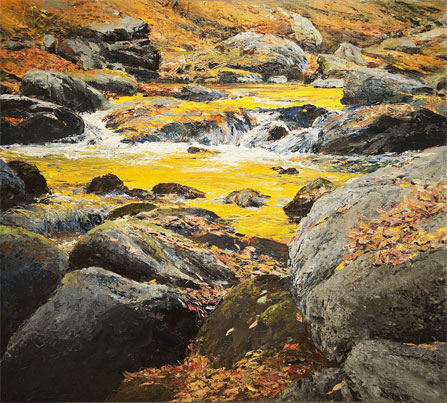 |
|
Black Light |
 |
|
The Sounds of Water |
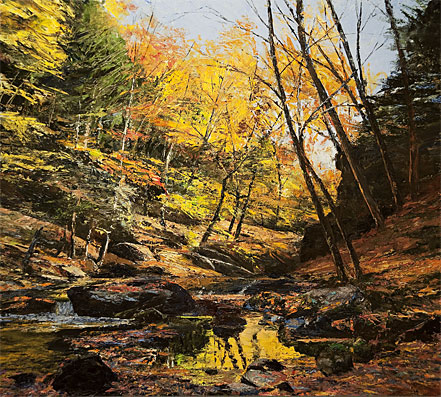 |
|
White Water 1 |
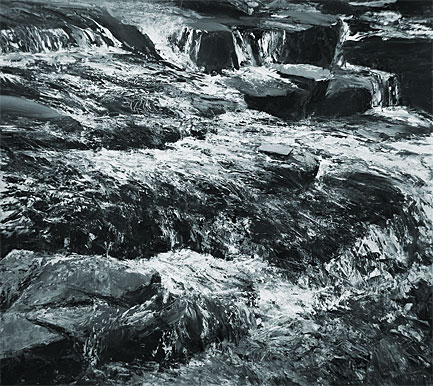 |
|
White Water 2 |
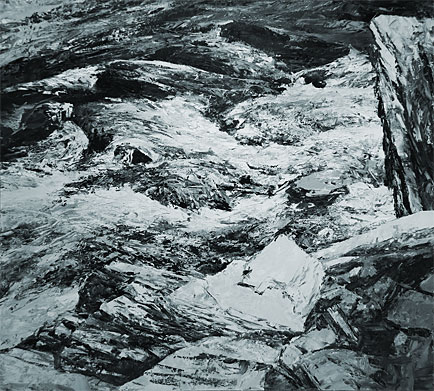 |
|
Leaves in a Tangle |
 |
|
Double Diamond |
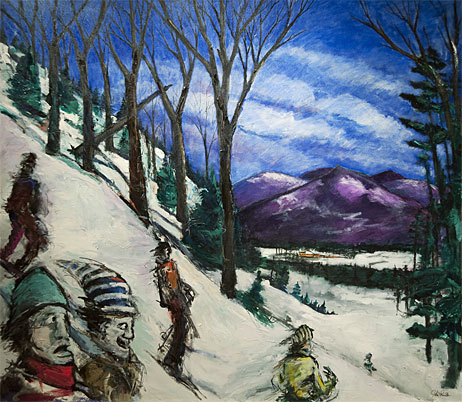 |
|
The Wave |
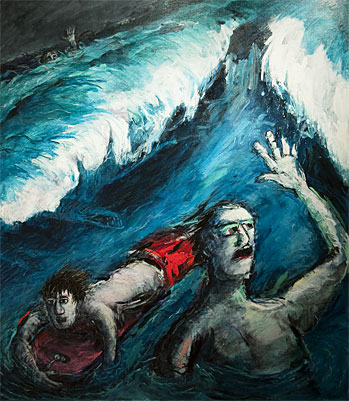 |
|
The Savoy Hotel |
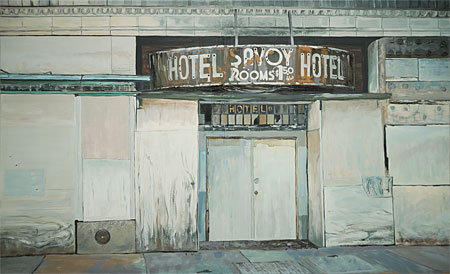 |
|
Star Pin |
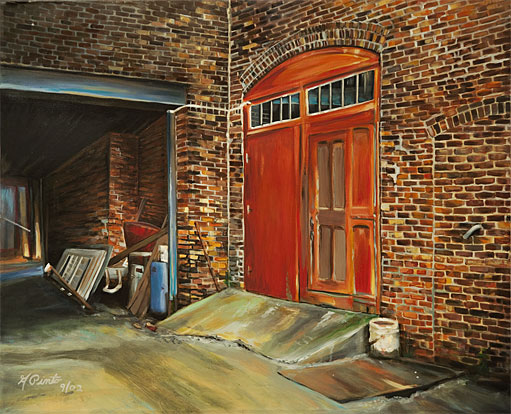 |
|
Sunset |
 |
|
The Artists Nest |
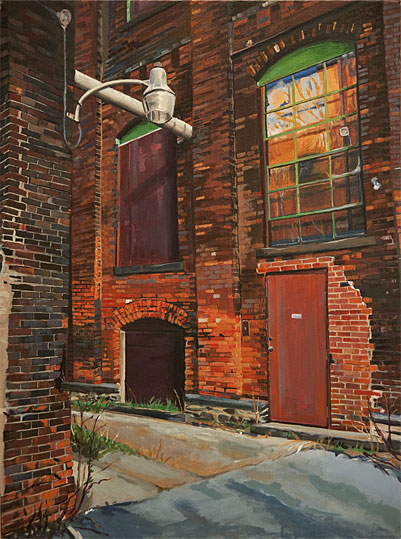 |
|
The Orange Door |
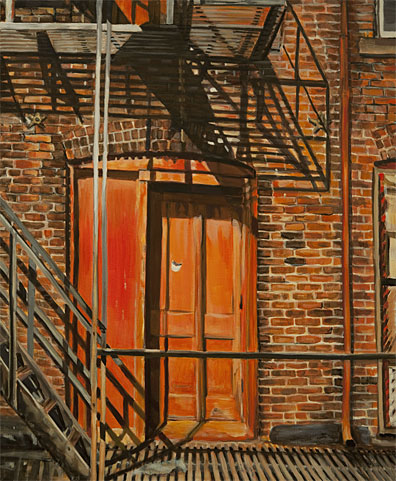 |
|
Provence Sun |
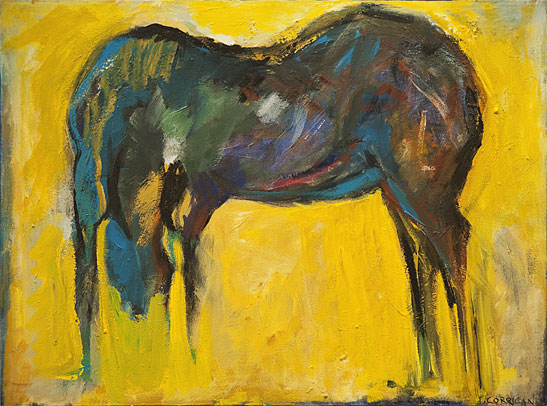 |
|
Nova Scotia 2 |
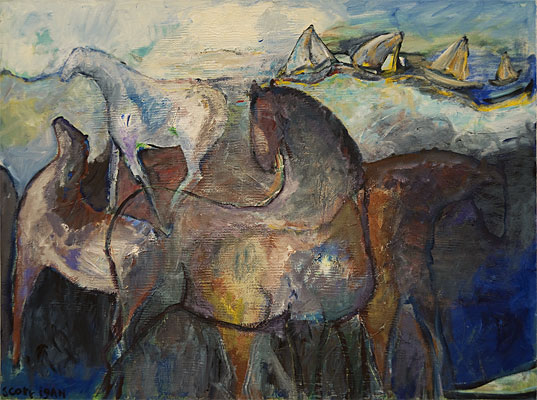 |
|
Youkilis vs. the Dragon |
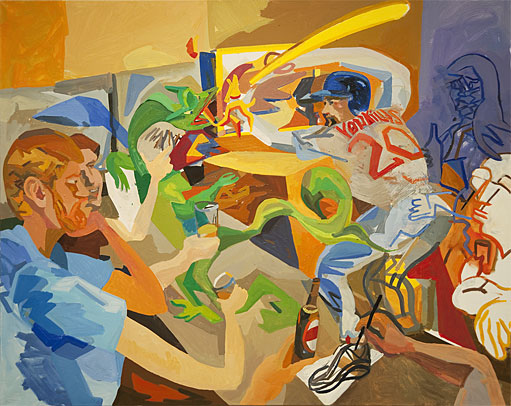 |
|
The Dream of Jean Helion |
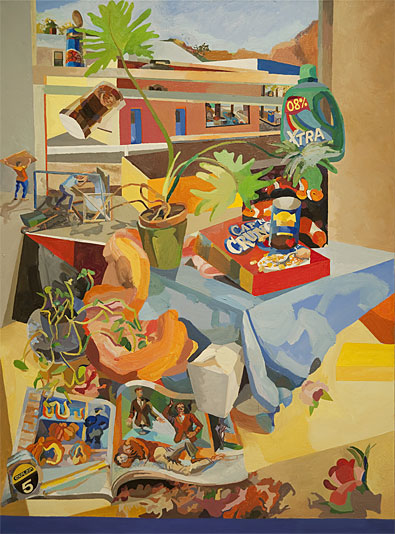 |


